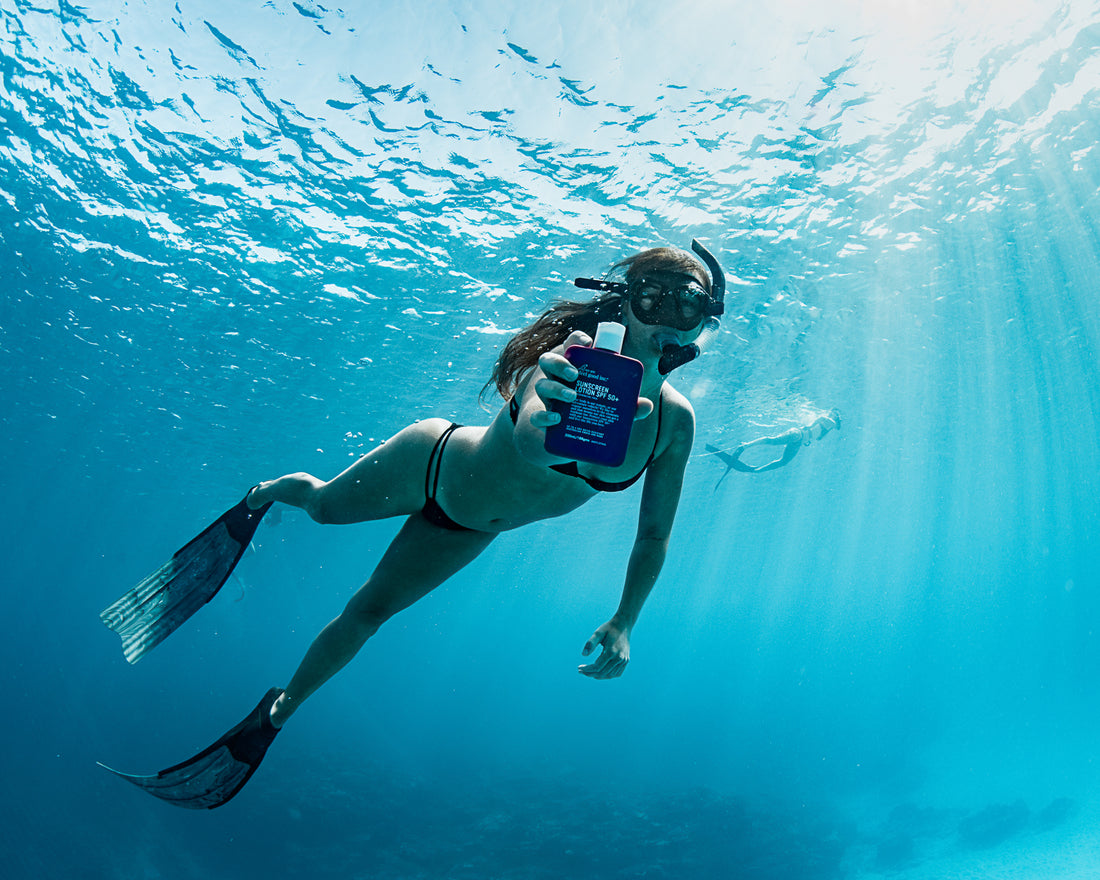What is the difference between water resistant and waterproof sunscreen? Firstly, there is no such thing as waterproof sunscreen, as all sunscreens do eventually wash off the skin when in water. So let’s start by explaining what water resistant sunscreen means and how it is determined.
Water resistance is measured by determining the SPF (sun protection factor) of the product after it has been in the water for the period of time claimed on the product. Meaning if a product claims "4 hours water resistant", it has been tested to have the same SPF protection after the product was applied to the skin and immersed in water for 4 hours.
To make a sunscreen water resistant, certain ingredients (such as Beeswax) can be added to sunscreen formulas to make them more water resistant by sticking to the skin, aka less likely to wash off in the water. There is no ingredient that can make sunscreen entirely resistant to water, so it's important to read the label and reapply every 2 hours or more when swimming, towelling or sweating.
It is important to note that heavy sweating or towel drying can affect a product's effectiveness and water resistance time, so we always recommend re-applying regularly in these circumstances.
The maximum water resistant claim period of 4 hours is only allowed for products which have an SPF rating of 30+ or more after immersion in water.
So, how do you choose the best sunscreen to keep your skin protected when you're in and out of the water?
- Look for a sunscreen that has an Australian TGA License Number (located on the front of the sunscreen packaging). The TGA's sunscreen regulations are among the strictest in the world. They are rigorous in seeking to exclude or minimise the use of ingredients with any scientific evidence for potential adverse effects for humans.
- Choose a sunscreen that provides Broad Spectrum SPF 50 protection. Broad Spectrum sunscreens protect you from both UVA rays (light that can cause skin cancers and aging) and UVB rays (light that can cause your skin to burn). Think UVA - "A" for aging, and UVB - "B" for burning.
- Sunscreens have different levels of water resistance and some are not water resistant at all, so be sure to read the labels and product information correctly. A sunscreen with a water resistance level should be clearly listed on the packaging i.e. Signature SPF 50+, Coconut SPF 50+, Sensitive SPF 50+, Kakadu Plum SPF 50+, Wild Rosella SPF 50+, Sticky Zinc SPF 50+, and Mineral Sunscreen SPF 50+. Sunscreens without water resistant properties are typically those designed for daily wear, in place of your morning moisturiser like Good Morning SPF 50.
- Choose a sunscreen that is enriched with skin-loving ingredients, like Aloe Vera & Vitamin E, to make sure your skin is not only protected but also nourished and moisturised once you're out of the water.
- Fun fact: Sunscreens with added antioxidants can help neutralise free radical damage caused by UVA and UVB rays, helping to prevent skin cancers and keeping skin firm and youthful. Lucky for you all of our products contain some form of antioxidant, helping to repair your skin from oxidative stress.

If you are spending hours at a time in the water, we recommend our Sticky Zinc SPF 50+.
Our Sticky Zinc SPF 50+ contains Niacinamide (Vitamin B3), an essential vitamin for many of your body’s vital internal functions. It is also a must-have in any good skincare regime. Niacinamide boosts skins immunity, improves epidermal barrier function and helps to increase ceramides in the skin, essential for keeping the skin barrier strong and preventing environmental damage.
